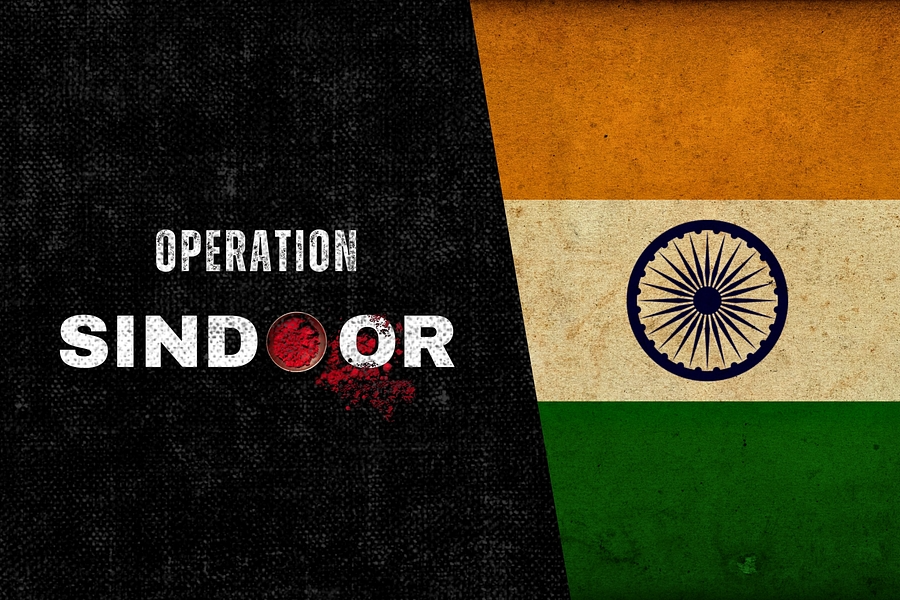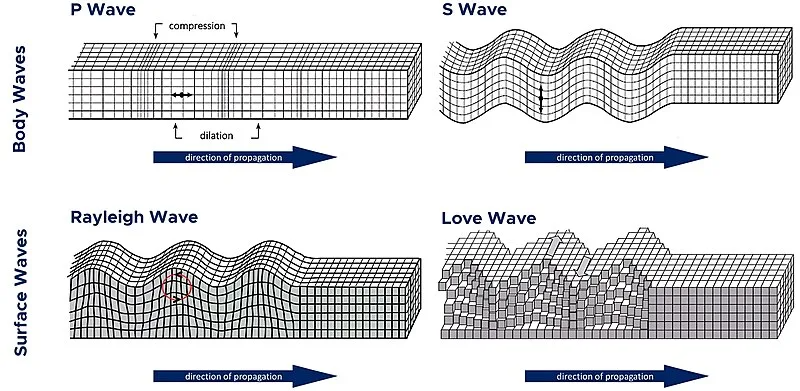July 31st Current Affairs
Table of Contents
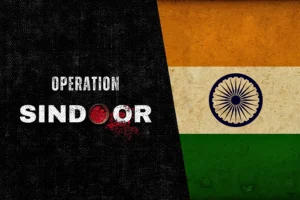
Operation Sindoor
July 21st Current Affairs Home / Operation Sindoor Why in News? Parliament’s Monsoon Session, starting July 21, 2025, is expected to feature
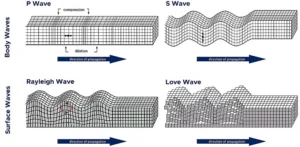
Alaska Earthquakes
July 21st Current Affairs Home / Alaska Earthquakes Why in News? On July 21, 2025, Alaska Peninsula was struck by

August 2, 2027 Solar Eclipse
July 21st Current Affairs Home / August 2, 2027 Solar Eclipse Why in News? A total solar eclipse is set
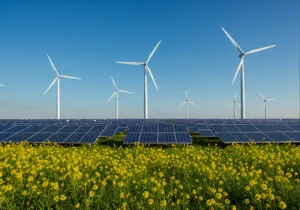
India’s milestone in clean energy transition
July 21st Current Affairs Home / India’s milestone in clean energy transition Why in News? India achieved a milestone by

‘Baby Grok’, child-friendly AI app
July 21st Current Affairs Home / ‘Baby Grok’, Child-friendly AI app Why in News? Elon Musk’s AI company xAI has announced
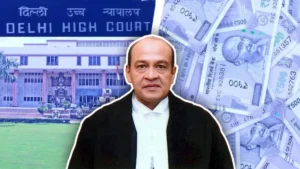
Impeachment proceedings against Justice Yashwant Verma
July 22nd Current Affairs Home / Impeachment proceedings against Justice Yashwant Verma Context On July 22, 2025, impeachment proceedings against
Missing Women and Girls in Madhya Pradesh
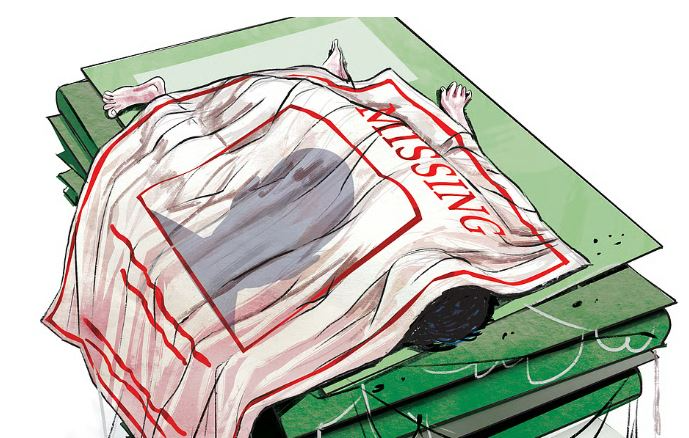
Context
Recent revelations in the Madhya Pradesh Vidhan Sabha have sparked concern over the disappearance of over 23,000 women and girls in the state, missing for more than a month and up to 1.5 years as of June 30, 2025. The data was disclosed in a reply to a question raised by ex-home minister during the monsoon session.
Background
The issue of missing women has been a persistent concern in India, with periodic media reports and NCRB (National Crime Records Bureau) data highlighting the gravity. In MP:
- Over 21,000 women and 1,500+ girls are missing.
- Disappearances occurred between January 2024 and June 2025.
- At least 30 districts have more than 500 cases each—across all major regions, including tribal belts and urban hubs.
Further, nearly 1,500 accused in related crimes—rape, abduction, and sexual assault—are yet to be traced by the police.
Government Measures
- Data Collection & Reporting: The State Home Department is monitoring missing person cases across districts.
- Special Task Forces (STFs): Deployed for tracking sexual offence accused and solving abduction cases.
- Beti Bachao Beti Padhao: Awareness programs are running, though the impact in tribal and remote districts appears limited.
- Digital Surveillance Tools: Use of CCTVs, AI-based facial recognition, and Aadhaar-based tracking remains limited in rural areas.
- Coordination with NCRB & Central Agencies: State police are reportedly collaborating with central databases.
Reasons behind Disappearances
- Human Trafficking: MP is a source state for trafficking, especially from tribal areas.
- Gender-based Violence: Domestic abuse, child marriage, and sexual violence often result in girls fleeing.
- Poor Law Enforcement: Delayed FIRs, under-resourced police stations.
- Economic Exploitation: Women migrating for work fall prey to exploitative networks.
- Cultural Patriarchy: Social stigma often forces families to remain silent or withdraw complaints.
Significance
- Violation of Fundamental Rights: Article 21 (Right to Life and Dignity) is directly impacted.
- Impact on SDG Goals: Particularly Goal 5 (Gender Equality) and Goal 16 (Peace, Justice, and Strong Institutions).
- Law and Order Breakdown: A Massive number of untraced accused reflects poor criminal justice delivery.
- Public Trust Deficit: Rising disappearances erode faith in state institutions and governance.
Definition of Key Technical Terms
- Missing Person: As per NCRB, a person whose whereabouts are unknown, regardless of the circumstances.
- Human Trafficking: As per Section 370 IPC—recruitment or movement of persons for exploitation through coercion or deception.
- Absconding Accused: A person who evades arrest and legal procedures after being charged with a crime.
Impact on Indian Society
- Psychological Toll: Families face long-term trauma.
- Gender Insecurity: Women’s mobility is restricted, especially in rural and tribal areas.
- Undermines Development: Affects women’s participation in education, work, and public life.
- Increases Vigilantism: When the state fails, communities may take justice into their own hands.
Challenges
- Under-reporting: Families avoid FIRs due to shame or distrust of police.
- Police Capacity: Manpower and technical support are inadequate in rural stations.
- Judicial Delay: Pending trials and slow conviction rates.
- Political Apathy: Sporadic responses instead of institutional reforms.
- Migration Complexity: Women migrating for domestic work often go untracked in informal sectors.
Economic Nuances
- Labour Exploitation: Missing women often end up in bonded labour or informal jobs.
- State Cost: Public spending on special task forces, legal services, and rescue efforts adds a burden.
- Loss of Human Capital: Educated or skilled women lost to trafficking hurt economic productivity.
- Link to Organised Crime: Missing women may be part of larger criminal networks involving trafficking rings.
Influence
- International Repercussions: India’s human rights record is scrutinised globally, especially in forums like the UNHRC.
- NGO-Driven Interventions: Local NGOs like Bachpan Bachao Andolan and Stop Trafficking Trust have stepped in to support families and trace victims.
Way Forward
- Women-Centric Policing: Increase women police personnel and sensitivity training.
- Use of Tech: Facial recognition, geofencing for real-time tracking, and missing person databases.
- District-level Audits: Monthly review of FIRs and case status by senior officials.
- Rehabilitation Support: Legal aid, counselling, and vocational support for rescued women.
- Community Awareness: Involve Panchayats, schools, and ASHAs in early warning systems.
Prelims MCQ
Q. Consider the following statements regarding missing persons in India:
- The NCRB defines a missing person as someone whose whereabouts are unknown, irrespective of the reasons.
- Human trafficking is covered under the Indian Penal Code, but not under any central legislation.
- State police are solely responsible for tracing missing persons; no central agency involvement is permitted.
Which of the above statements is/are correct?
A. 1 only
B. 1 and 2 only
C. 2 and 3 only
D. 1, 2 and 3
Answer: A. 1 only
Explanation:
- Statement 1 is correct: NCRB considers anyone whose location is unknown to family or law enforcement, for any duration or reason, as a missing person.
- Statement 2 is incorrect: While human trafficking is included in IPC Section 370, it is also covered under the Immoral Traffic (Prevention) Act, 1956, a central legislation.
- Statement 3 is incorrect: Central agencies like NCRB, NIA, and even Interpol may be involved, especially in inter-state or international cases.
Hence, only Statement 1 is correct.
Mains Question
Q. Despite various policies and legal provisions, the problem of missing women and girls continues to persist in India, particularly in states like Madhya Pradesh. Critically examine the institutional, legal, and socio-economic factors contributing to this issue. Also suggest effective solutions. (250 words)
US Tariff on India and Opposition's Foreign Policy Critique
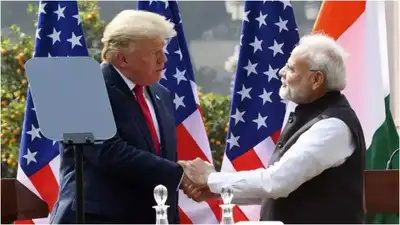
Context
In July 2025, U.S. President Donald Trump announced a 25% tariff “plus penalty” on Indian goods, sparking sharp political backlash in India. Opposition leaders slammed the government’s foreign policy, accusing it of being subservient to U.S. interests and compromising national sovereignty. The episode has ignited a debate on the direction and effectiveness of India’s trade diplomacy, particularly with the United States.
Background
India and the United States have had a complex trade relationship:
- The U.S. is India’s largest trading partner, with bilateral trade surpassing $190 billion in 2023–24.
- Tensions have flared previously over data localisation, agricultural subsidies, market access, and digital taxes.
- Under Trump’s earlier presidency (2016–2020), the U.S. revoked India’s GSP (Generalised System of Preferences) status in 2019.
- PM’s outreach to Trump, including the “Howdy Modi” and “Namaste Trump” events, was aimed at strengthening bilateral ties.
The current tariff announcement follows the President’s assertion that he mediated a ceasefire between India and Pakistan, raising concerns over India’s diplomatic autonomy.
Government Measures
So far, there has been no formal public response from the PM or the Ministry of External Affairs (MEA). However, likely internal steps include:
- Diplomatic backchannels through India’s Ambassador in Washington.
- Consultations with the Ministry of Commerce and Industry to assess sectoral impact.
- Quiet engagement with U.S. counterparts to seek waivers or revised terms.
- Possible escalation to WTO dispute mechanisms.
Reasons for Tariff Imposition
- Trade Imbalance: The U.S. perceives India’s trade practices as protectionist.
- Geopolitical Leverage: Tariffs are used by the U.S. to extract broader concessions, including on defence deals, energy policy, and strategic alignments.
- Election Strategy: The President’s rhetoric is tailored to appeal to domestic voters with promises of “fair trade”.
- India-Russia Relations: India’s continued oil purchases and defence engagement with Russia irk Washington.
Significance
- Economic Impact: Tariffs can hurt key Indian export sectors like pharmaceuticals, textiles, and IT services.
- Strategic Recalibration: India’s balancing act between strategic autonomy and alignment with the West comes under strain.
- Foreign Policy Test: The government’s “personal diplomacy” faces criticism for yielding insufficient strategic returns.
Definitions of Technical Terms
- Tariff: A government-imposed tax on imports or exports, used to regulate trade or generate revenue.
- Generalised System of Preferences (GSP): A U.S. trade program offering duty-free entry for products from developing countries.
- Trade Deficit: A condition where a country’s imports exceed its exports with a specific trade partner.
Impact on India's Foreign Relations
- US-India Strain: This move signals a hardening of the U.S. posture toward India.
- India-Pakistan Angle: Claim of mediating a ceasefire undermines India’s position that Kashmir is a bilateral issue.
- Global Perception: India may be seen as diplomatically weak if no firm response is made.
- China Factor: These tensions may push India closer to alternative partners like France, Russia, or ASEAN states for diversification.
Challenges
- Lack of Trade Pact: India has no Free Trade Agreement (FTA) with the U.S.
- Domestic Industry Vulnerability: Indian exports face margin pressure from both tariff hikes and global slowdown.
- Political Optics: Public perception of “appeasement” may erode the government’s strong image.
- Multilateral Limitations: WTO’s effectiveness has declined, limiting India’s legal options.
Diplomatic Nuances
- Quiet Diplomacy: India avoids public confrontations but engages behind the scenes.
- Balancing Russia and the West: Navigating U.S. pressure while maintaining ties with Russia.
- Strategic Patience: Maintaining a steady posture to avoid overreacting during an election cycle in the U.S.
Influence
- Domestic Political Fallout: The opposition gains ammunition to challenge Modi’s foreign policy credibility.
- Investor Confidence: Tariff-related uncertainty may reduce FDI inflows.
- Long-term Reset: India may re-prioritise other bilateral engagements and seek trade diversification.
Way Forward
- Issue Formal Response: MEA and PMO must clarify India’s position firmly.
- Trade Diversification: Reduce over-dependence on U.S. markets.
- Pursue FTAs: Fast-track ongoing FTA talks with the UK, the EU, and GCC.
- WTO Redressal: If applicable, file a complaint under the WTO’s dispute settlement mechanism.
- Strategic Clarity: Reinforce India’s stand on non-mediation in Kashmir and emphasise economic sovereignty.
Prelims MCQ
Q. Consider the following statements regarding India’s trade and foreign policy:
- India currently enjoys duty-free access to U.S. markets under the Generalised System of Preferences (GSP).
- Tariffs imposed by a country can be challenged under the WTO Dispute Settlement Mechanism.
Which of the above statements is/are correct?
A. 1 only
B. 2 only
C. Both 1 and 2
D. Neither 1 nor 2
Answer: B. 2 only
Explanation:
- Statement 1 is incorrect: India’s GSP status was revoked by the U.S. in 2019 and has not been reinstated as of 2025. Hence, Indian goods no longer enjoy duty-free access.
- Statement 2 is correct: The World Trade Organisation (WTO) allows countries to challenge unfair or protectionist tariffs through its Dispute Settlement Body.
Thus, only Statement 2 is correct.
Mains Question
Q. Regarding the recent U.S. tariff imposition on Indian exports, critically examine the effectiveness of India’s trade diplomacy and foreign policy. Suggest measures to strengthen India’s negotiating position in an evolving global order. (250 words)
Repatriation of Sacred Piprahwa Buddhist Gemstones
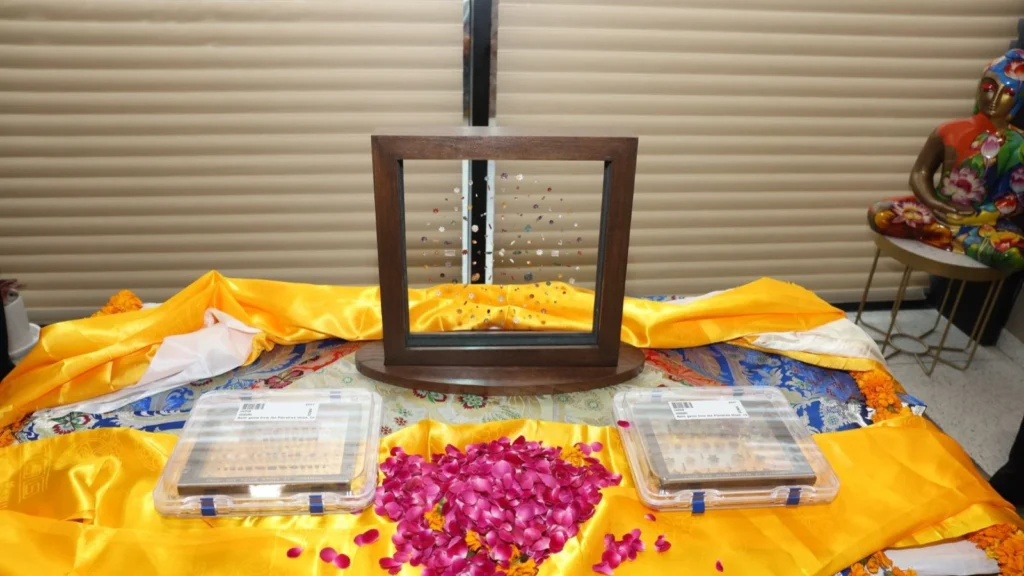
Context
In July 2025, a set of 349 sacred gemstones believed to be associated with the Piprahwa relics of Lord Buddha was successfully repatriated to India, 127 years after they were removed during British colonial rule. This move was facilitated by Pirojsha Godrej through a public-private partnership and marks a significant cultural and diplomatic milestone for India.
Background
- The Piprahwa Stupa, located in Siddharthnagar district, Uttar Pradesh (near the India-Nepal border), was excavated in 1898 by British engineer William Claxton Peppé.
- The excavation yielded bone relics believed to be of Siddhartha Gautama (Buddha), housed in soapstone and crystal caskets, with accompanying jewels.
- While some artefacts went to the Indian Museum, Kolkata, others were retained by Peppé’s descendants.
- In 2024-25, his heir, Chris Peppé, listed the jewel collection for auction at Sotheby’s Hong Kong.
Government Schemes and Legal Efforts
- The Ministry of Culture issued legal notices to Sotheby’s and Chris Peppé to halt the auction and facilitate repatriation.
- The Archaeological Survey of India (ASI) and Consulate General of Hong Kong were roped in diplomatically.
- The issue was raised with the UK Secretary of State for Culture, although it failed to intervene due to private ownership concerns.
- Eventually, a private route was chosen to avoid state-to-state commercial dealings over sacred items.
Relevant Laws & International Conventions
- Antiquities and Art Treasures Act, 1972, governs the export and trade of Indian cultural artefacts.
- UNESCO 1970 Convention on prohibiting the illicit import/export of cultural property supports India’s claim.
- The concept of “cultural restitution” guides global efforts for returning heritage items to countries of origin.
Reasons behind the Repatriation
- Rising domestic and international advocacy to reclaim India’s looted heritage.
- Prevent auctioning of sacred relics for profit, violating their religious sanctity.
- Reassertion of India’s identity as Buddha’s birthplace, especially amid China’s cultural claims in Buddhist diplomacy.
Significance of the Move
- Religious and spiritual: Deeply revered by Buddhists globally, especially during Buddha Purnima celebrations.
- Cultural diplomacy: Elevates India’s image as a protector of ancient heritage.
- Soft power tool: Enhances cultural influence across Southeast and East Asia.
- PPP model success: Encourages private stakeholders in heritage protection.
Definition of Technical Terms
- Repatriation: The return of cultural property to its country of origin.
- Reliquary: A container used to preserve religious relics.
- Stupa: A dome-shaped Buddhist monument housing relics.
Impact on India’s Foreign Relations
- Strengthens cultural outreach to Buddhist-majority nations (e.g., Sri Lanka, Thailand, Myanmar, Japan).
- Counters China’s “Buddhist diplomacy” via initiatives like the Belt and Road-linked Nalanda revival.
- Positions India as the authentic custodian of Buddhist heritage.
Challenges
- Legal hurdles in dealing with private collectors abroad.
- Ethical issues around buying back stolen or looted artefacts.
- Limitations of international conventions in retroactive enforcement.
- Rising auction of Indian artefacts on foreign platforms (e.g., Christie’s, Sotheby’s).
Cultural Nuances and Influence
- The relics are not just archaeological but spiritually sacred, central to Theravāda and Mahāyāna traditions.
- Bodh Gaya, Sarnath, Piprahwa, and Kushinagar are spiritual destinations interlinked by Buddhist pilgrimage circuits.
- This return may inspire mass cultural mobilisation among global Buddhist communities.
Way Forward
- Establish a Permanent National Heritage Repatriation Cell within the Culture Ministry.
- Enhance digital tracking and registration of artefacts via the National Mission on Monuments and Antiquities (NMMA).
- Sign bilateral MoUs for the voluntary return of cultural property.
- Mobilize diaspora & CSR arms of corporates for funding heritage retrieval.
- Encourage transparency in global auction houses through pressure campaigns and watchdog groups.
Prelims MCQ
Q. Consider the following statements regarding the Piprahwa Buddhist relics case (2025):
- The Piprahwa relics were discovered in Uttar Pradesh and originally held at the Indian Museum, Kolkata.
- India invoked UNESCO’s 1970 Convention to enforce the legal return of the relics from the Hong Kong authorities.
Which of the above is/are correct?
A. Only 1
B. Only 2
C. Both 1 and 2
D. Neither 1 nor 2
Answer: A. Only 1 is correct
Statement 1 is correct. The Piprahwa relics were discovered in 1898 in Siddharthnagar, Uttar Pradesh, at an ancient Buddhist stupa site near the India-Nepal border. A portion of the relics, including bone fragments and caskets, has been held in the Indian Museum, Kolkata, since colonial times.
Statement 2 is incorrect. Although India referred to international norms such as the UNESCO 1970 Convention on cultural property, it did not enforce the return through the Convention mechanism. Instead, India issued legal notices and pursued diplomatic channels, and ultimately, the Godrej Group privately acquired the artefacts to ensure their return. This unconventional, non-treaty route was chosen due to the relics being privately held by a British citizen and listed for sale at Sotheby’s Hong Kong—a location under Chinese jurisdiction.
Thus, while international norms were cited, UNESCO’s legal mechanisms were not formally invoked or enforced in this case.
Mains Question
Q. Examine the significance of repatriating cultural artefacts like the Piprahwa relics in strengthening India’s soft power and cultural diplomacy. Also discuss the role of public-private partnerships in this context. (250 words)
India Reiterates Support for Two-State Solution at UN

Context
India, at the UN High-Level International Conference on Palestine (July 28–30, 2025), reaffirmed its long-standing support for the two-state solution to the Israel-Palestine conflict. India called for purposeful dialogue, humanitarian aid, and an immediate ceasefire in Gaza, highlighting a pragmatic approach beyond symbolic gestures.
Background
- India recognised the State of Palestine in 1988, among the earliest non-Arab countries to do so.
- The two-state solution envisions an independent State of Palestine coexisting side-by-side with Israel within mutually agreed borders.
- The recent escalation in Gaza post-October 2023 (after Hamas’s attack and Israeli retaliation) has caused massive civilian casualties and a humanitarian disaster, prompting international re-engagement on the issue.
Government Laws & Policy Position
- India’s foreign policy balances support for Palestine’s statehood with strategic ties to Israel.
- Indian position is grounded in international law, UN Resolutions, and bilateral development cooperation with Palestine.
- India has contributed over $160 million in aid to Palestine through developmental, humanitarian, and capacity-building projects.
Reasons for India’s Statement
- Upholding India’s historical non-aligned position and commitment to self-determination.
- Growing instability in the Middle East affects energy security, trade routes, and diaspora safety.
- Rising global attention on the Gaza humanitarian crisis.
- Reaffirming India’s multilateral credentials amid major power divisions.
Significance
- Reinforces India’s image as a balanced and principled global player.
- Supports a rules-based international order through advocacy of peaceful settlement.
- Prevents perception of India taking sides amid global polarisation.
- India positions itself as a moderating force capable of dialogue with both West Asian blocs.
Definition of Technical Terms
- Two-State Solution: Proposal for establishing an independent Palestine alongside Israel based on pre-1967 borders with East Jerusalem as its capital.
- Occupation: Holding territory by military force without sovereignty (Israel over the West Bank and Gaza).
- Humanitarian Assistance: Aid given to save lives and alleviate suffering during crises.
Impact on India’s Foreign Relations
- With Israel: Maintains defence and tech partnerships (e.g., missiles, UAVs, AI tech).
- With Palestine and the Arab World: Preserves goodwill with OIC, GCC, and non-aligned countries.
- Global Stage: Enhances India’s profile as a future permanent member of the UNSC through balanced diplomacy.
- Avoids aligning with the US-Israel bloc or the Iran-led resistance axis.
Relevant UN Conventions and Frameworks
- UNGA Resolution 181 (1947): Partition Plan proposing two states.
- UNSC Resolutions 242 (1967), 338 (1973): Call for Israeli withdrawal and peaceful settlement.
- Fourth Geneva Convention: Prohibits demographic changes in occupied territories.
- Oslo Accords (1993): Basis of the peace process between Israel and the PLO.
Challenges
- Lack of consensus among global powers (the US, China, and Russia differ).
- Deepening polarisation in West Asia.
- Hamas’s non-recognition of Israel, Israeli hardline stance.
- Fragmented Palestinian leadership (Fatah in the West Bank, Hamas in Gaza).
- Humanitarian crisis: famine-level indicators, displaced civilians, destroyed health infrastructure.
Diplomatic Nuances & Influence
- India supports Palestinian rights, condemns terrorism, and defends Israel’s right to security.
- Balancing act amid rising Islamophobia, Jewish nationalist politics, and geopolitical fragmentation.
- India’s influence in the Global South bolsters its credibility in such conflicts.
- India’s G20 presidency and regional diplomacy enhance its role in conflict mitigation.
Way Forward
- Advocate for a permanent ceasefire and inclusive peace talks.
- Expand humanitarian corridors and reconstruction aid.
- Support Palestinian Authority institution-building, not non-state actors.
- Collaborate with multilateral forums and the Arab League for an actionable peace roadmap.
- Promote economic and developmental models in Palestine through South-South cooperation.
Prelims MCQ
Q. Consider the following statements about India’s position on the Israel-Palestine conflict (2025):
- India has consistently supported the two-state solution based on internationally agreed borders and UN resolutions.
- India advocated replacing the Palestinian Authority with a transitional administrative committee under UN supervision.
Which of the above is/are correct?
A. Only 1
B. Only 2
C. Both 1 and 2
D. Neither 1 nor 2
Answer: A. Only 1 is correct
Statement 1 is correct. India reiterated its traditional stand of supporting a two-state solution — i.e., the creation of a sovereign, viable, and independent State of Palestine living side by side with Israel, as per UN resolutions and mutual negotiations. This has been India’s consistent position since it recognised Palestine in 1988.
Statement 2 is incorrect. While the UN outcome document proposed a transitional administrative committee in Gaza under the Palestinian Authority, India did not advocate replacing the Palestinian Authority. Instead, it emphasised that any resolution must be based on diplomacy between existing parties — i.e., the Palestinian Authority and Israel — without endorsing any UN-imposed governance.
India’s focus was on practical steps, including ceasefire, humanitarian access, and releasing hostages, not on restructuring governance in Palestine through external control.
Mains Question
Q. In the context of the ongoing conflict in Gaza, critically examine India’s reaffirmation of the two-state solution at the UN. How does India’s position balance its strategic interests and normative commitments in West Asia? (250 words)
Kavach & Railway Safety — 77% Drop in Train Accidents (2014–2025)
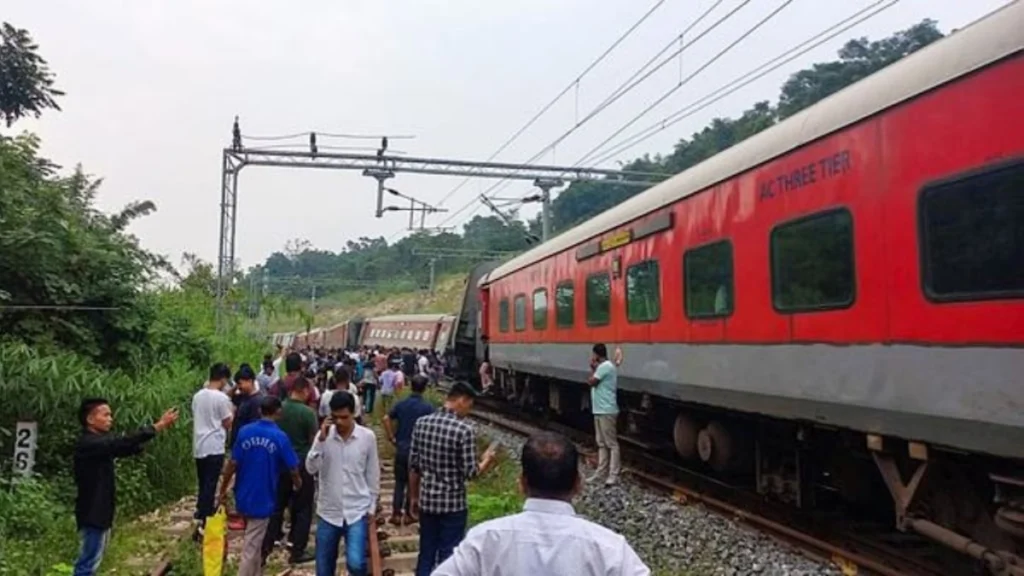
Context
On July 30, 2025, the Union Railway Minister informed the Lok Sabha that train accidents in India have reduced by 77% over a decade, from 135 in 2014–15 to 31 in 2024–25. A key factor behind this improvement is the deployment of Kavach, an indigenously developed Automatic Train Protection (ATP) system under the Make-in-India initiative.
Background
- Indian Railways has historically struggled with derailments, collisions, and level-crossing accidents.
- The Odisha train tragedy of June 2023, killing 296 and injuring 1,200, remains a grim reminder.
- Despite such incidents, data shows a sharp long-term decline in accidents, supported by safety-centric reforms and investments in modern signalling, infrastructure, and automation.
- Safety modernisation picked up pace post-2017, especially after the institution of Mission Zero Accident and a revamp of the Railway Safety Fund.
Government Laws & Institutional Support
- Railway Safety Fund: Financed jointly by the Centre and Indian Railways, used for upgrading safety infrastructure.
- Railways Act, 1989: Governs operational and passenger safety norms.
- Commission of Railway Safety (CRS): A statutory authority under the Ministry of Civil Aviation for accident investigations.
- Deployment of AI-driven predictive maintenance and high-speed monitoring systems enabled by law.
Reasons for the Drop in Accidents
- Introduction of the Kavach ATP system to prevent driver-induced errors.
- Deployment of optical fibre networks (5,856 km laid).
- Use of data centres, advanced software in 1,107 locomotives.
- Regular training, audits, and simulation-based safety drills.
- Track renewal, fencing, electrification, and modernised control rooms.
- Real-time monitoring via Integrated Command and Control Centres.
Significance
- Public confidence in Indian Railways improves.
- Averts major economic and humanitarian losses.
- Boosts India’s standing in global railway safety rankings.
- Supports India’s ambition to expand semi-high-speed and bullet trains.
- Encourages domestic innovation through Make-in-India & Atmanirbhar Bharat.
Definition of Technical Terms
- Kavach: An indigenously developed Automatic Train Protection (ATP) system that prevents signal-passing-at-danger (SPAD) and auto-halts the train in case of driver negligence or external risk.
- ATP: Systems that automatically control train speed and movement to ensure safe operations.
- Optical Fibre Network: High-speed data communication infrastructure crucial for real-time monitoring and control.
Impact on India’s Transport System
- Safer railway operations mean reduced delays, cargo loss, and passenger fatalities.
- Enhances logistics reliability vital for freight corridors and multimodal connectivity (PM Gati Shakti).
- Encourages modal shift from road to rail, aiding environmental goals.
- Attracts foreign investment and PPPs in railway infrastructure.
Logistical & Technological Nuances
- Kavach Version 4.0 is now being tested on the Kota–Mathura route; full rollout will need inter-zonal interoperability.
- Installation requires synchronisation of telecom towers, loco software, and signalling.
- Seamless operation depends on 24×7 maintenance of trackside and onboard equipment.
- Requires backwards compatibility with older rolling stock and tracks.
- Integrates with Train Collision Avoidance System (TCAS) and centralised traffic management.
Challenges
- Cost and scale: Kavach installation is expensive and time-consuming.
- Uneven deployment — only 4,000 km covered so far out of 68,000 km.
- Human resource shortage in electronics, cybersecurity, and AI in railways.
- Resistance from older railway zones to tech transitions.
- Last-mile safety gaps in rural, unmanned crossings.
Influence
- Sets a benchmark for other developing countries in rail safety.
- Enhances India’s soft power as a railway tech exporter to Africa and South Asia.
- Boosts urban mobility projects via technology cross-pollination.
Way Forward
- Scale up Kavach across the entire Golden Quadrilateral and high-density networks.
- Mandate Kavach installation in all new locomotives and coaches.
- Strengthen partnerships with private tech firms via Make-in-India & Startup India.
- Upgrade training for loco pilots and station masters in digital safety tools.
- Integrate Kavach with AI, IoT, and predictive analytics for smarter decision-making.
Prelims MCQ
Q. Concerning the Kavach system introduced by Indian Railways, consider the following statements:
- Kavach is an Automatic Train Protection system developed indigenously under Make-in-India.
- It prevents collisions by directly controlling train speeds without any driver intervention.
Which of the above is/are correct?
A. Only 1
B. Only 2
C. Both 1 and 2
D. Neither 1 nor 2
Answer: C. Both 1 and 2 are correct
Statement 1 is correct. Kavach is an indigenous Automatic Train Protection (ATP) system developed by Indian Railways under the Make-in-India initiative. It is designed to prevent train accidents by using technology to override driver errors and ensure safe distances and compliance with signal indications.
Statement 2 is also correct. Kavach works by automatically applying brakes and halting the train if it overshoots a red signal or is on a collision course. It monitors speed, driver alertness, and station signals. In cases of human error or lapse, the system can take autonomous control of the train to prevent mishaps.
Hence, both statements are correct.
Mains Question
Q. Indian Railways has reported a 77% decline in accidents over the past decade, attributing success to indigenous technologies like Kavach. Critically examine. (250 words)



